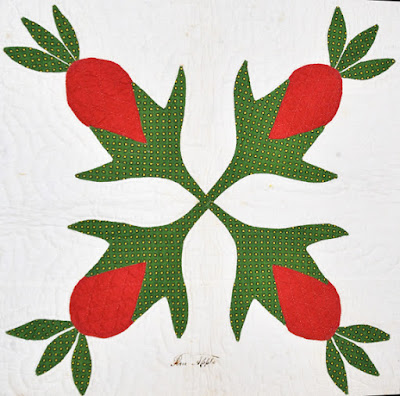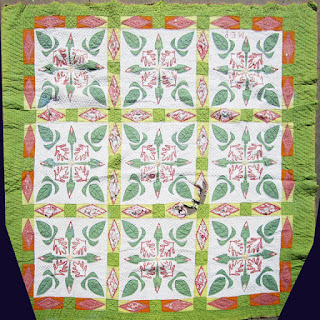Sorting my nine-patch pictures I came across this vintage quilt in BlockBase pattern #1656
The pattern was published with two names, the first in the magazine Hearth and Home
in the first decades of the 20th century. I shaded the block in BlockBase as I found it in Ruth Finley's book.
Early 20th-century top quilted in the late 20th-century.
Connecticut project & the Quilt Index
In her 1929 book Old Patchwork Quilts and The Women Who Made Them, Finley classed it with several "Simple but widely used nine-patches that every person interested in quilts should know..." Readers (like me) inferred that the pattern was decades old but I doubt that now. It probably originated with Hearth and Home and was popularized by Finley's book. I love the neat little block sketches in Finley's book, but I think the shading is wrong in #42 Prairie Queen.
It should be more symmetrical.
When the Nancy Cabot column in the Chicago Tribune copied the pattern in 1933
the shading was just like Finley's.
See a shading discussion here at Moore About Nancy:
Spencer Museum of Art
Carrie Hall's version of Finley's with the shading changed
to give a more circular format.
Hall's block in her 1935 book The Romance of the Patchwork Quilt
may have inspired this quilt from the 1940-1980 years.
Mid-20th-century
It takes some skill in spatial relations to get all the pieces rotating the way you intended.
Different shading can emphasize the pattern's directionality.
Laura McDonough Boyd, Indiana project & the Quilt Index
Laura pieced little blocks for the cornerstones.
























































